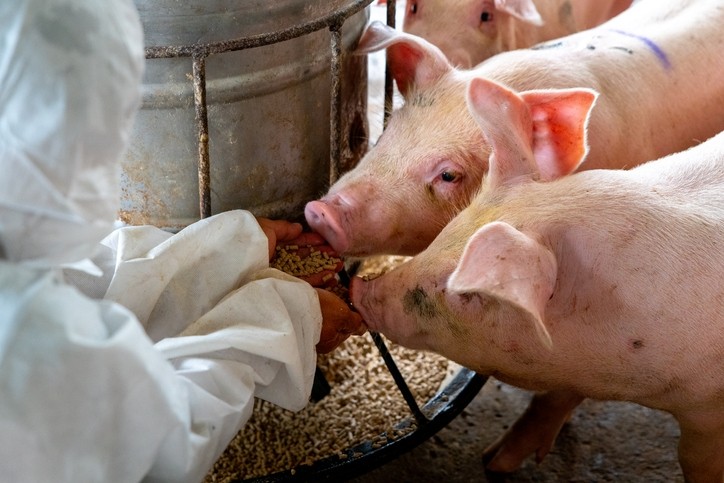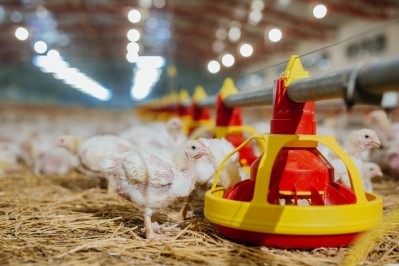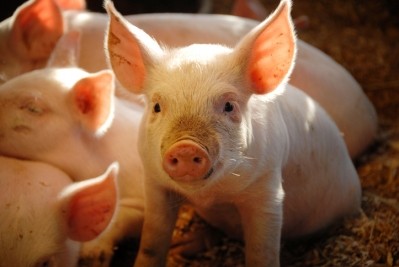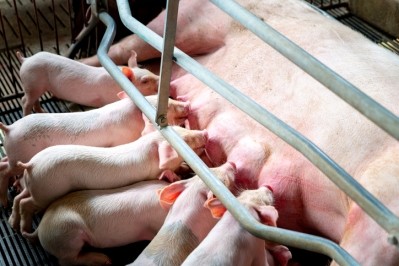Dietary fiber has potential to boost intestinal health in monogastric animals

Dr Jürgen Zentek, director of the Institute for Animal Nutrition, Freie Universität Berlin, expanded on the benefits of dietary fiber in monogastric and companion animal diets during the virtual International Akademie Fresenius Feed Conference last month.
Fiber is more than just a bulk product, and it has huge potential to improve the intestinal health of animals, he said.
Though the effect differs depending on the fiber source. And animal species react differently to various fiber types, noted Dr Zentek.
Looking at archive material in the literature, there are a lot of papers showing the anti-nutritional (ANF) challenges from employing fiber in animal diets, he said.
But he also reported on other studies, again from some years ago, showing that fiber can be considered an energy source in monogastric animals, that fiber fermentation can contribute up to 30% of the maintenance energy requirements in pigs, with energy yield of fiber fermentation in breeding sows even more substantial.
There is much more research backed data now showing dietary fiber can have a positive effect on reproduction, on health, on animal welfare, and on behavioral traits, he stressed,
“And there are more and more data now showing that fiber can have a beneficial effect on gut function.”
Fiber sources
There are different qualities of fiber but the level of the solubility and the fermentability of the fiber, is key to understanding mode of action of fiber in the gut, he said.
In terms of the impact on the intestinal microbiome, water binding, or peristaltic regulation, low fermentable fibers such as bran and cellulose will have completely different effects compared to the more fermentable fibers including beet pulp, pectins, and psyllium, said the animal nutrition specialist.
However, his own research plus a trawl through the literature indicates that, when formulating diets, and in order to achieve the optimum effect on the gut in animals, it is important to combine both types of fiber sources, said Dr Zentek.
Gastrointestinal tract
Studies have shown that fiber rich diets, in terms of poultry application, can stimulate the secretion of digestive enzymes and there is also a positive impact on intestinal villi surface and nutrient absorption, remarked the professor. He said that such effects are very much dependent on the fiber source and the physical structure of the fiber material used.
In terms of pigs, he notes multiple data sources showing that fermentable fiber has an impact on the lower gastrointestinal tract (GIT), increased growth of bacteria with cellulolytic, pectinolytic and hemicellulolytic activities has been seen, and there is also evidence that certain types of dietary fiber can promote beneficial bacteria such as lactobacilli and bifidobacterial in the GIT microbiota of pigs.
Immune system
He said it is now known that dietary fiber has an impact on the immune system of animals – it may be direct or it may be modulated by the impact of fiber on the GIT microbiota.
It is also accepted that dietary fiber has an influence on the maturation and the function of the immune system.
It has been shown as well, said Zentek, that fiber intake in pigs and other species can have a positive impact on colonic barrier related proteins, on mucus production, that there is also an impact on immune-globulin A, and mounting evidence of the effect on dietary fiber on gene regulation, with a raft of studies recording an impact in terms of anti-inflammatory gene expression.
Other studies indicate that the innate and adaptive immune system of animals is affected as well as short-chain fatty acid (SCFA) production from the supplementation of animal diets with dietary fiber.
Most studies show that fermentable fiber can have a positive effect on butyrate production and SCFA production overall, he said.
Welfare issues
A study carried out by Zentek at colleagues explored the effect of a 10% dietary lignocellulose dilution showed a positive impact as regards foot pad challenges in birds.
The team saw that a lower excreta moisture content could be detected in lignocellulose fed hens, which they said might have positive effects on litter quality.
Sow diets
Dr Pedro Urriola, research associate professor, Department of Animal Science, the University of Minnesota, told this publication that the use of fiber in sow diets can increase the number of pigs born alive and can decrease preweaning mortality, but, again, the effect may be source dependent.
He participated in a webinar on sow diets on FeedNavigator earlier this year, where he reviewed a range of maternal dietary interventions that can benefit the offspring in the swine sector.
“Fiber is a way to control energy intake, but not all fibers can do the same thing. It seems that insoluble fiber sources may have the most beneficial effect, but we need still to determine which of those is the most effective.”
Researchers are trying to understand the physical and chemical properties of fiber such as viscosity could be tied to elements of gut health, or in the case of late gestating sows, to insulin resistance. Insulin resistance is a natural occurrence in late gestating animals, where the mother goes through a period of such resistance, explained Dr Urriola.
“However, that has an impact on subsequent lactation feed intake. Therefore, helping the mother cope with insulin resistance through the utilization of fiber could be of benefit. The type of fibers that have an impact on this insulin resistance appear to be those that have a high viscosity value,” he said.















